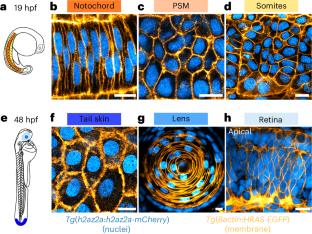2024-08-12 スイス連邦工科大学ローザンヌ校(EPFL)
<関連情報>
- https://actu.epfl.ch/news/new-research-shows-how-trees-cope-with-extreme-h-3/
- https://onlinelibrary.wiley.com/doi/10.1111/gcb.17439
ヨーロッパ産の3種のオークにおいて、高い耐暑性、蒸発冷却、気孔脱離が樹冠温度とその安全マージンを調節している High heat tolerance, evaporative cooling, and stomatal decoupling regulate canopy temperature and their safety margins in three European oak species
Alice Gauthey, Ansgar Kahmen, Jean-Marc Limousin, Alberto Vilagrosa, Margaux Didion-Gency, Eugénie Mas, Arianna Milano, Alex Tunas, Charlotte Grossiord
Global Change Biology Published: 02 August 2024
DOI:https://doi.org/10.1111/gcb.17439

Abstract
Heatwaves and soil droughts are increasing in frequency and intensity, leading many tree species to exceed their thermal thresholds, and driving wide-scale forest mortality. Therefore, investigating heat tolerance and canopy temperature regulation mechanisms is essential to understanding and predicting tree vulnerability to hot droughts. We measured the diurnal and seasonal variation in leaf water potential (Ψ), gas exchange (photosynthesis Anet and stomatal conductance gs), canopy temperature (Tcan), and heat tolerance (leaf critical temperature Tcrit and thermal safety margins TSM, i.e., the difference between maximum Tcan and Tcrit) in three oak species in forests along a latitudinal gradient (Quercus petraea in Switzerland, Quercus ilex in France, and Quercus coccifera in Spain) throughout the growing season. Gas exchange and Ψ of all species were strongly reduced by increased air temperature (Tair) and soil drying, resulting in stomatal closure and inhibition of photosynthesis in Q. ilex and Q. coccifera when Tair surpassed 30°C and soil moisture dropped below 14%. Across all seasons, Tcan was mainly above Tair but increased strongly (up to 10°C > Tair) when Anet was null or negative. Although trees endured extreme Tair (up to 42°C), positive TSM were maintained during the growing season due to high Tcrit in all species (average Tcrit of 54.7°C) and possibly stomatal decoupling (i.e., Anet ≤0 while gs >0). Indeed, Q. ilex and Q. coccifera trees maintained low but positive gs (despite null Anet), decreasing Ψ passed embolism thresholds. This may have prevented Tcan from rising above Tcrit during extreme heat. Overall, our work highlighted that the mechanisms behind heat tolerance and leaf temperature regulation in oak trees include a combination of high evaporative cooling, large heat tolerance limits, and stomatal decoupling. These processes must be considered to accurately predict plant damages, survival, and mortality during extreme heatwaves.


